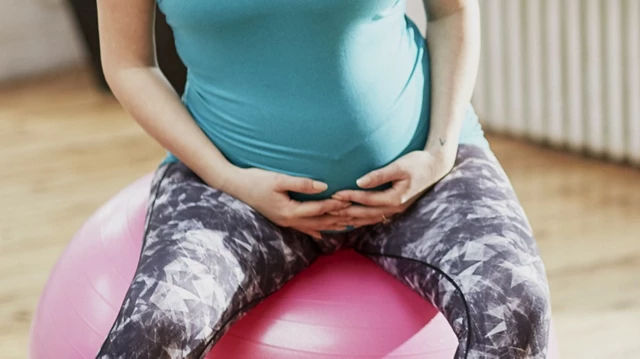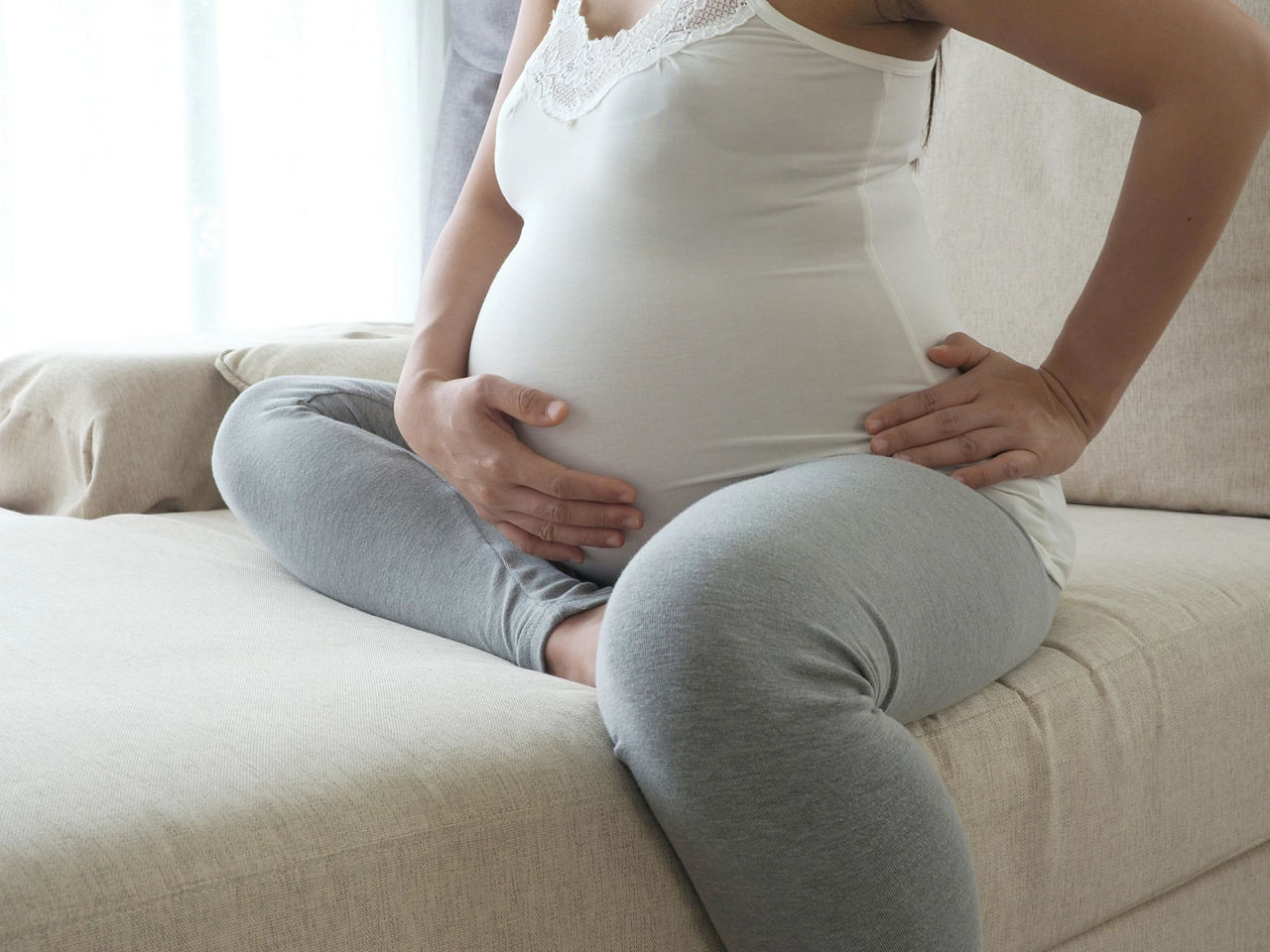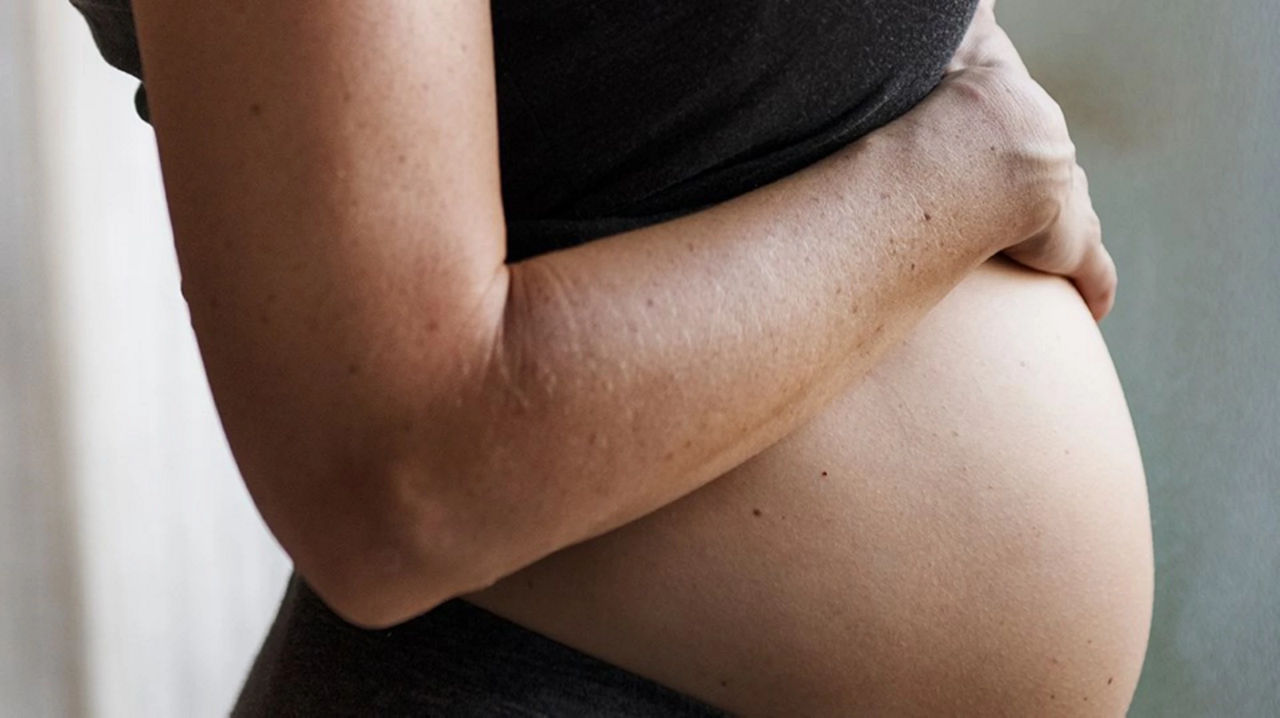Birthing positions
Comfort is key
Everything you need to know about birthing positions
It’s natural to feel nervous about giving birth. Understanding your options and the benefits of different birth positions can help you feel more prepared. It’s also important to know what to expect if you need an assisted delivery or a caesarean, in case things don’t go to plan.

Being in a good position
During labour, there are certain positions that can make the birthing process easier. The most important thing is to make yourself as comfortable as possible, and don’t be afraid to experiment. Being upright, able to move around and free to change positions is better for you and your baby. As labour progresses, your baby is busy manoeuvring through the birth canal and it helps if your body can respond to the changing sensations.
Standing
When labour starts, you’ll probably feel a bit restless and want to be on the move. This is why many women prefer to be up on their feet. Leaning on a bed, wall or your birth partner will take some of the weight off your legs and make it less tiring.
The benefits of standing
- Helps widen your pelvis and manoeuvre your baby into the right position1
- Increases your chances of having a shorter labour2
- Some women find standing relieves pain
- Being upright means gravity is on your side and pushes your baby downwards.
Squatting
Some women feel a natural urge to squat during labour. Although it’s not an easy position to maintain and can put a lot of pressure on your knees and back, you can use your birth partner for physical support or ask your midwife for a birthing ball or stool.
The benefits of squatting
- Widens your pelvis, giving your baby more room to turn and move
- Gives you the freedom to shift your weight around
- Makes your body weight press down on your uterus, which should make pushing easier
- As with standing, gravity is in your favour

Assisted delivery
If your baby needs a little extra help moving down the birth canal in the later stages of delivery, your midwife or doctor might suggest an assisted delivery using a ventouse suction cup or forceps.
There are various reasons for needing an assisted delivery3:
- You might be getting too tired to push
- Your baby is in an awkward position
- Your contractions may have become weaker
- If you’ve been pushing for a while, your baby might be getting tired and in distress
- There are concerns about your baby’s heart rate
Using a ventouse
During this type of assisted delivery, a suction cup (sometimes known as a ‘kiwi cup’) will be placed on the top of your baby’s head in the birth canal. The level of suction is controlled safely with a pump and as you push with your next contraction, the cup will also pull to help deliver your baby. The ventouse is normally only used a maximum of three times to avoid harming your baby4.
Using forceps
They are spoon-like metal instruments that fit around your baby’s head and help pull your baby out during a contraction1. With a forceps delivery, it’s usually necessary for a doctor to perform a controlled cut to make more room for the baby’s head and avoid any further damage to your soft tissue. While you push with a contraction, the doctor will pull gently to guide your baby along. You may need a local anaesthetic as it can be painful. A forceps delivery is usually carried out in an operating theatre, in case the baby will not come out and a caesarean section is required4.
Whatever the reason for an assisted delivery, your midwife will explain what’s happening and make sure you know exactly what’s going on.
Caesarean section
A caesarean section (C-section) involves delivering your baby through an incision at the base of your bump, just below your bikini line5. Unless you have a particular reason for planning a caesarean, it may not likely be part of your expectations for birth. However, for various reasons, around 25% of women in the UK do end up needing a C-section3, so it’s best to know what it involves.
What happens during a C-section
Most caesareans are performed under regional anaesthetic to numb you from the waist down, using either an epidural or a spinal block6. This means you’re awake as your baby is born, so that you can start bonding at the earliest opportunity.
You’ll normally have a screen put up across your chest so that you can’t see the operation itself6. If your birth partner wants to see what’s going on, that’s fine, as long as you feel comfortable with it.
Your doctor will make the cut about 10cm to 20cm along the top of your bikini line, which will have to be shaved for the operation. You may feel some pressure and pulling during the procedure, but no pain6.
Although the actual delivery of your baby only takes around 5 to 10 minutes, the entire length of the procedure is usually around 40–50 minutes5
What happens afterwards
Your birth partner will be able to hold your baby while you’re being stitched up. This takes roughly half an hour, after which you should be able to start breastfeeding. It will probably be more comfortable to lie on your side but if you find this awkward, ask your midwife for help.
Recovering from a C-section takes about six weeks5,6 – longer than after a vaginal birth. You will be offered painkillers as you may experience some discomfort and pain during first couple of days5. All being well, you should be able to go home with your baby after 24 hours, although most women stay in hospital for 2–4 days.
Next steps
Make sure you include the following in your birth plan:
- Your preferred birthing position
- Any particular views you may have on methods of assisted delivery
- Your preferences during a C-section, should it become necessary
related articles
Learn more about Labour & Birth

Need some help?
You can get quick answers to common questions in our FAQs.
Alternatively, if you need help with general pregnancy or baby advice, or maybe on using or ordering our products - our expert team are always on hand to talk about feeding your baby.
- NHS. Labour positions. [Online]. 2020. Available at https://www.nhsinform.scot/ready-steady-baby/labour-and-birth/labour/labour-positions [Accessed July 2021]
- Tommy’s. Movement and positions during labour. [Online]. 2019. Available at https://www.tommys.org/pregnancy-information/giving-birth/movement-and-positions-during-labour [Accessed July 2021]
- NHS. Forceps or vacuum delivery. [Online]. 2020. Available at https://www.nhs.uk/pregnancy/labour-and-birth/what-happens/forceps-or-vacuum-delivery/ [Accessed July 2021]
- NHS. Assisted Vaginal Birth. [Online]. 2021. Available at https://www.nbt.nhs.uk/maternity-services/labour-birth/labour-birth-complications/assisted-vaginal-birth#:~:text=your%20baby's%20head.-,The%20obstetrician%20will%20wait%20until%20you%20are%20having%20a%20contraction,more%20than%20three%20are%20attempted [Accessed July 2021]
- NHS. Overview Caesarean section. [Online]. 2019. Available at https://www.nhs.uk/conditions/caesarean-section/ [Accessed July 2021]
- NCT. Having a caesarean section: what to expect. [Online]. 2018. https://www.nct.org.uk/labour-birth/different-types-birth/caesarean-birth/having-caesarean-what-expect [Accessed July 2021]
Last reviewed: 28th July 2021
Reviewed by Oriana Hernandez Carrion





